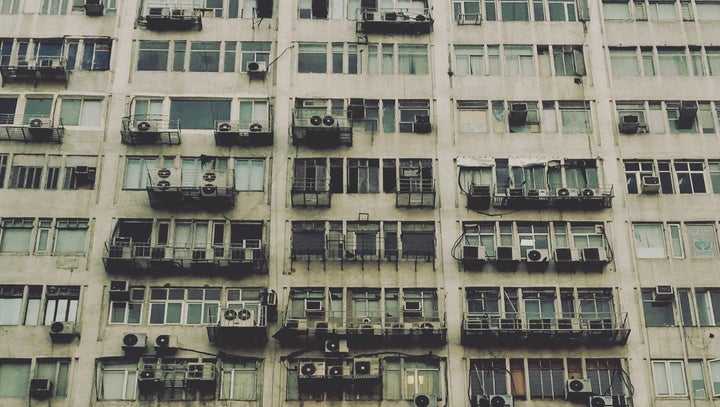
In the debate over how to tackle climate change, the issue of carbon dioxide from fossil fuels is front and centre. This is understandable; carbon dioxide is the primary driver of our heating planet, however while the carbon wars are being waged, other greenhouse gasses, smaller but far more potent, are being pumped into our air from the world’s air conditioners.
What’s worrying about these substances, known as HFCs, is that as the greenhouse effect heats up the world, demand for air conditioners will rise, especially among the burgeoning middle class in India and Africa. If we don’t change the technology we use to cool ourselves we are in danger of cooking the planet and creating a vicious cycle.
The path to these climate cooking HFCs is paved with good intentions. They were created to replace their predecessors, CFCs, which were responsible for punching the hole in the ozone layer. The Montreal Protocol, agreed in 1987, knocked these on the head and ushered in HFCs. What we didn’t realise then was just how bad HFCs were to our fragile climate. The good news is that technological innovation has helped create new, cost effective, alternatives which don’t cause climate change.
Now the Montreal Protocol, having proven to be the most successful international environmental agreement in history, is being used to give another international environmental agreement a lifeline to succeed.
The Paris Agreement, signed two years ago in the French capital, is the world’s best chance to tackle climate change and help vulnerable communities. But it’s goal of keeping temperature rise to 1.5 degrees Celsius above pre-industrial levels, can only be achieved if we rapidly phaseout HFCs. The noise about Trump’s threat to withdraw from Paris (one that cannot actually happen until after the next US general election) gets the headlines but it’s actually the much less well reported talks around air conditioners that hold the key to keeping temperatures down in the short term.
Last year in Rwanda the Kigali Amendment was signed, the ‘Paris Agreement for air conditioners’ which committed the world to phasing out HFCs. What now needs to happen is for this phaseout to take place as quickly as possible.
A key part of that is a fund to help finance this needed transition in poorer countries to help them catch up with the latest technology. This money will speed up the biggest change in the places that need it most and where the greatest benefit to the global climate can be delivered.
What’s encouraging is that the Kigali Amendment has now received the minimum number of signatories and so will come into force on the earliest possible date; January 1st 2019. But universal ratification by all countries is needed for the impact to be felt around the world.
Gaby Drinkwater, Christian Aid’s Senior Policy and Advocacy Advisor, said: “Universal ratification by all nations is needed to send a strong signal to manufacturers and markets that the use of outdated and polluting HFC technology is being left behind. This will trigger new investment and research from industry, further improving the energy efficiency of cooling appliances that will be big business as temperatures rise.”
